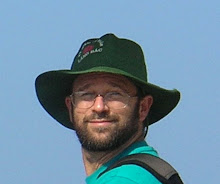Back to 7/12: I spent 7 1/2 hours on a very small, crowded boat slowly making its way through the very shallow river from Siem Reap to Battambang. It was a fantastic day.

 Tonle Sap, also referred to as "Great lake," is the largest fresh water lake in Southeast Asia. It is unusual for two reasons: 1) the water flow changes directions twice a year, during the wet and dry seasons, and 2) Tonle Sap changes size dramatically, from 2,700 square kilometers and only one meter deep during the dry season, to 16,000 square kilometers during monsoon season.
Tonle Sap, also referred to as "Great lake," is the largest fresh water lake in Southeast Asia. It is unusual for two reasons: 1) the water flow changes directions twice a year, during the wet and dry seasons, and 2) Tonle Sap changes size dramatically, from 2,700 square kilometers and only one meter deep during the dry season, to 16,000 square kilometers during monsoon season.













Battambang: From the late 18th century to the early 20th century, the province of Battambang was ruled by Thailand. Due to the French Siamese treaty of 1907, Thailand was obliged to return Battambang to Cambodia.
On the boat I met Justin, a math professor from the University of Maryland, and Christoph, a German, now living now in Switzerland getting his PhD is something very esoteric. As we hungrily walked around Battambang, I introduced Christoph to mangosteens, and Justin introduced both of us to fried crickets.

 French colonial architecture (supposedly Battambang is the most "French " of all the Cambodian towns)
French colonial architecture (supposedly Battambang is the most "French " of all the Cambodian towns) Wat Kamphaeng
Wat Kamphaeng
7/13: The three of us hired a tuk-tuk for an all day tour. First we road the bamboo train 8 kilometers to the next village.
 The trains travel around 15 kilometers an hour (9 miles an hour). The bamboo trains consist of three parts (two sets of wheels on axles, and the bamboo platform). When two trains meet, one is disassembled in seconds and lifted off the track.
The trains travel around 15 kilometers an hour (9 miles an hour). The bamboo trains consist of three parts (two sets of wheels on axles, and the bamboo platform). When two trains meet, one is disassembled in seconds and lifted off the track.


 View from the hill of Banan
View from the hill of BananOur last stop was Phnom Sampeou mountain, site of a beautiful wat and a number of caves, one of which was the site where Khmer Rouge dumped the bodies of its victims, bludgeoned to death then thrown over the edge.



















No comments:
Post a Comment